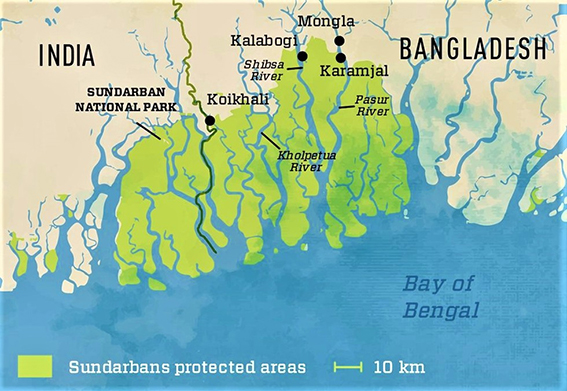Biodiversity & Environment
World Heritage Sites & Climate Change
- 01 Nov 2021
- 5 min read
Why in News
The first ever scientific assessment of the amounts of greenhouse gases emitted from and absorbed by forests (2001-2020) in UNESCO World Heritage sites has found that forests in World Heritage sites play a vital role in mitigating climate change.
Key Points
- Mitigating Climate Change:
- World Heritage sites play a vital role in mitigating climate change by absorbing 190 million tons of CO2 from the atmosphere each year.
- Carbon sequestration by world heritage forests over long periods has led to total carbon storage of approximately 13 billion tons of carbon.
- If all this stored carbon were to be released into the atmosphere as CO2, it would be akin to emitting 1.3 times the world’s total annual CO2 emissions from fossil fuels.
- However, ten forests released more carbon than they sequestered due to pressure from human activity and climate change, which is alarming.
- UNESCO under its World Heritage Marine Programme lists 50 sites across the globe for their unique marine values. These represent just one per cent of the global ocean area. But they comprise at least 15% of global blue carbon assets.
- Blue Carbon is organic carbon that is mainly obtained from decaying plant leaves, wood, roots and animals. It is captured and stored by coastal and marine ecosystems.
- India’s Sundarbans National Park (60 million tonnes of carbon) is among five sites that have the highest blue carbon stocks globally.
- Reason for High Emissions:
- At some sites the clearance of land for agriculture caused emissions to be greater than sequestration.
- The increasing scale and severity of wildfires, often linked to severe periods of drought, is also a predominant factor in several cases.
- Other extreme weather phenomena, such as hurricanes, contributed at certain sites.
- Recommendations:
- Protection of Heritage Sites:
- Strong and sustained protection of UNESCO World Heritage sites and their surrounding landscapes to ensure their forests could continue to act as strong carbon sinks and stores for future generations.
- Rapid Response:
- Rapidly responding to climate-related events, as well as maintaining and strengthening ecological connectivity through improved landscape management.
- Integrated Protection:
- Integrating the continued protection of UNESCO World Heritage sites into international, national and local climate, biodiversity and sustainable development strategies.
- It should be in line with the Paris climate agreement, the Post-2020 Global Biodiversity Framework and the Sustainable Development Goals.
- Protection of Heritage Sites:
Sundarban National Park
- It is located in the south-east of Kolkata in the District of West Bengal and forms part of the Gangetic Delta.
- The Sundarbans are mangrove forest, on the delta of the Ganges, Brahmaputra and Meghna rivers on the Bay of Bengal.
- The area is known for its wide range of fauna. It is home to many rare and globally threatened wildlife species such as the estuarine crocodile, Royal Bengal Tiger, Water monitor lizard, Gangetic dolphin, and olive ridley turtles.
World Heritage Marine Programme
- It is a global collection of unique ocean places stretching from the tropics to the poles.
- Today, the List includes 50 unique ocean places across 37 countries – recognized for their unique marine biodiversity, singular ecosystem, unique geological processes or incomparable beauty.
- India’s Sundarban National Park is the only listed site under this programme.
World Heritage Sites
- A World Heritage Site is a place that is listed by UNESCO for its special cultural or physical significance.
- The list of World Heritage Sites is maintained by the international 'World Heritage Programme', administered by the UNESCO World Heritage Committee.
- This is embodied in an international treaty called the Convention concerning the Protection of the World Cultural and Natural Heritage, adopted by UNESCO in 1972.
- India has 40 world heritage sites, including 32 cultural properties, 7 natural properties and 1 mixed site. The latest one included is Dholavira in Gujarat.





